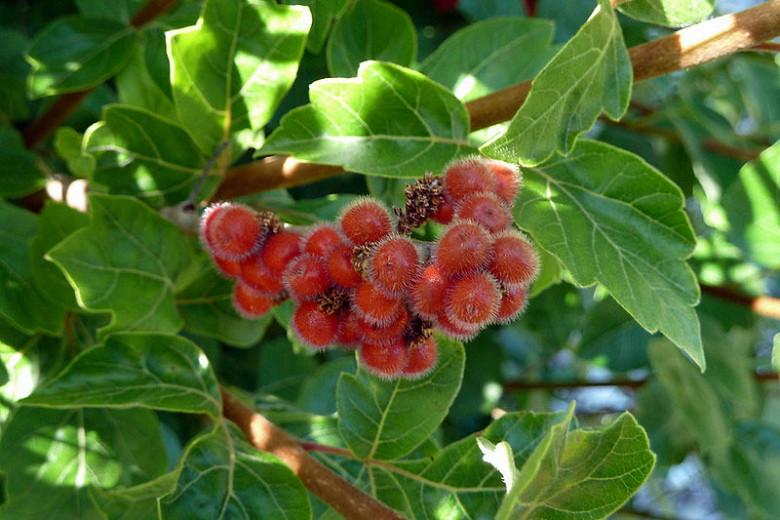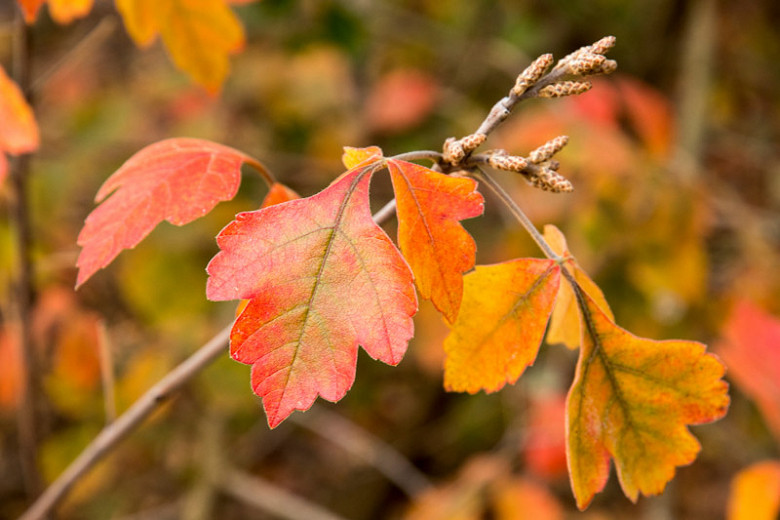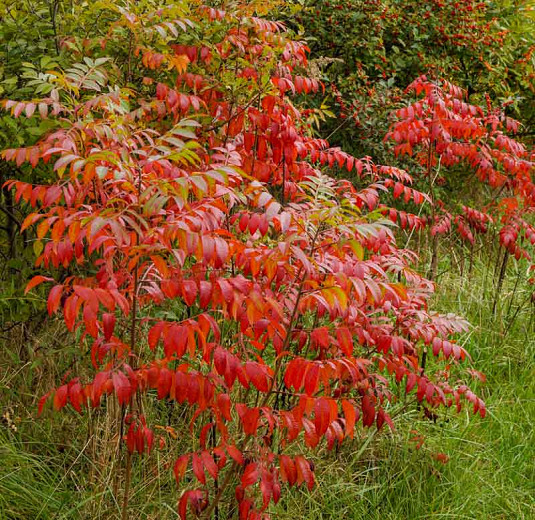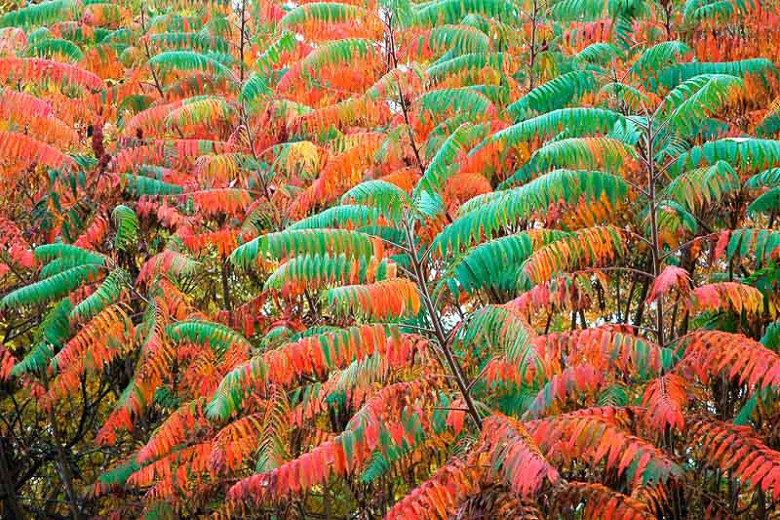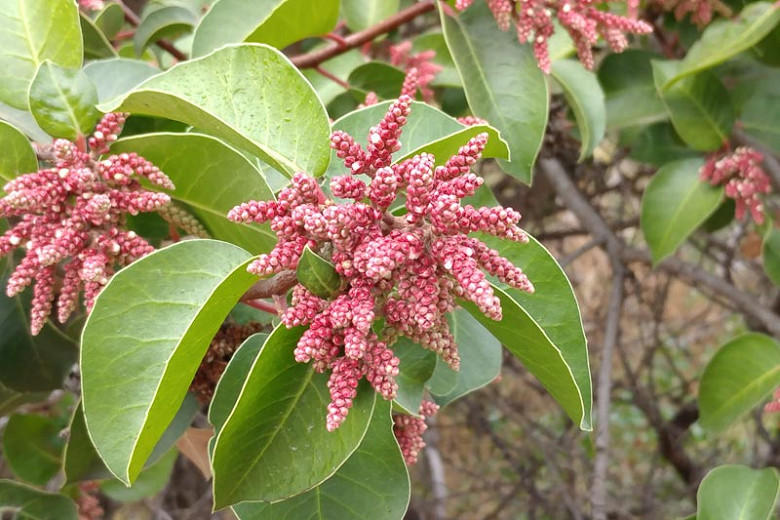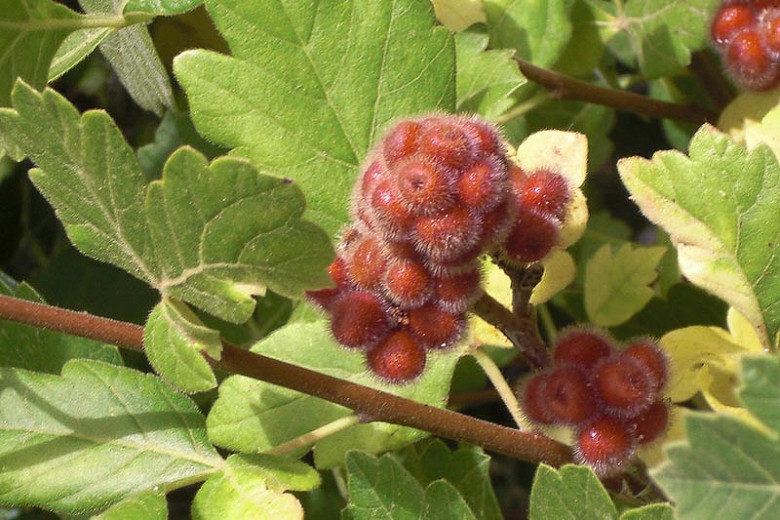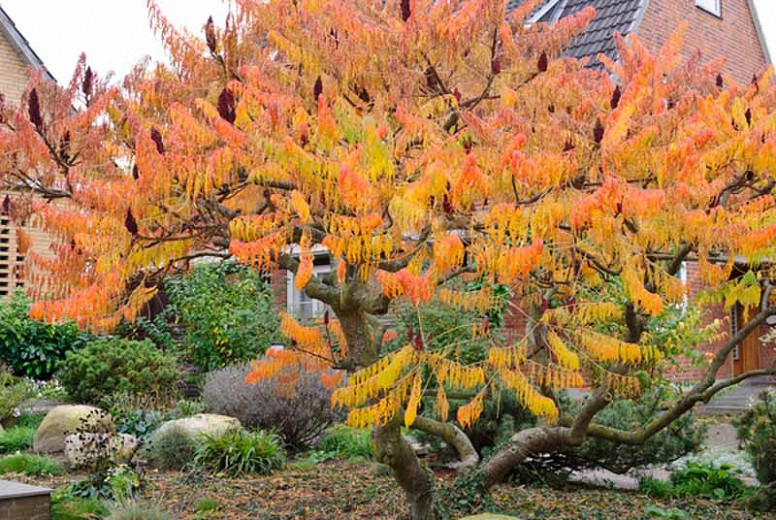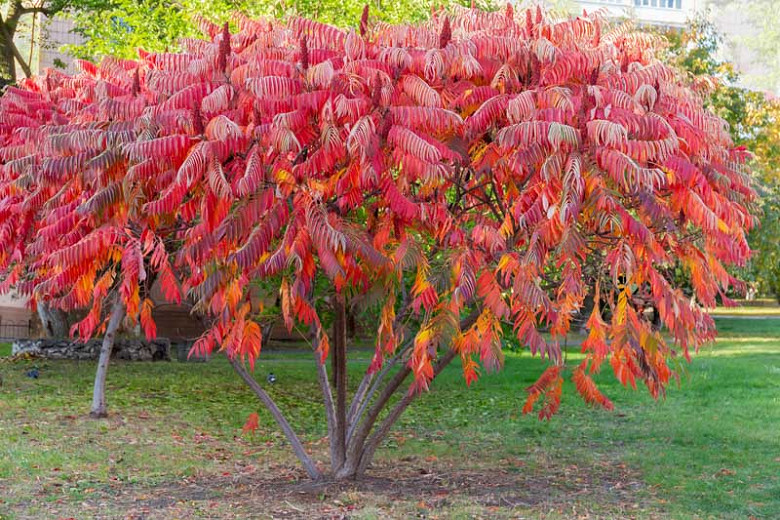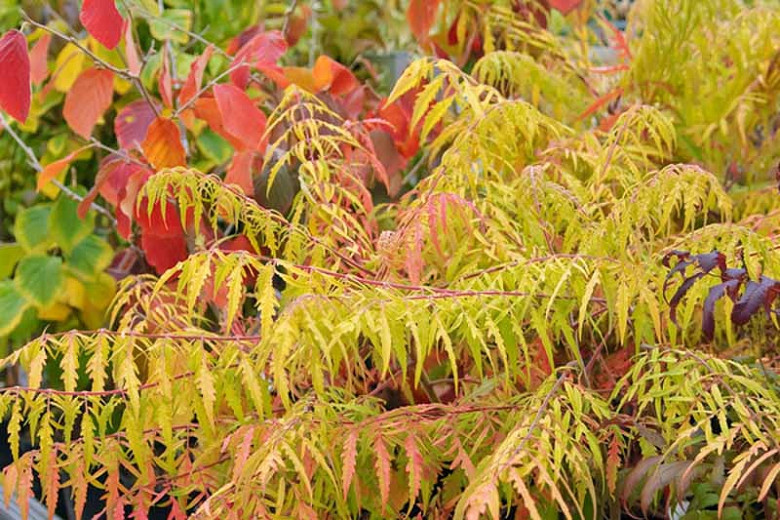Rhus aromatica (Fragrant Sumac)
Noted for its aromatic foliage, attractive berries, and glorious fall colors, Rhus aromatica (Fragrant Sumac) is a dense, sprawling, deciduous shrub with lower branches that turn up at the tips. Native to North America, it is dioecious with separate male and female plants. The male plants produce yellow catkins, while the female plants boast clusters of tiny yellow flowers in spring. They bloom at the tips of velvety twigs before the foliage emerges. The flowers are a nectar source for bees and butterflies. The pollinated female flowers are followed by small clusters of hairy, red berries in late summer, which may persist through fall and winter. They provide food for birds and small mammals when other foods are scarce or unavailable. The lush foliage of trifoliate, coarsely toothed, blue-green leaves turns attractive shades of yellow, orange, purple, and red in fall. The leaves and twigs are fragrant when crushed. Cold-hardy, easy to grow, pest and disease-resistant, and drought-tolerant, Rhus aromatica is great for erosion control because of its strong root development. It also makes a thick ground cover, is useful in shrub borders, and looks best when planted in drifts.
- Typically grows up to 2-6 ft. tall (60-180 cm) and 6-10 ft. wide (180-300 cm). Fast-growing, it spreads by root suckers to form thickets.
- Full sun to part shade lover, this plant is easily grown in average, dry to moist, well-drained soils. Best fruit production and fall color when planted in full sun. Extremely adaptable to varied soils, it tolerates dry, rocky, or clay soils. Drought and salt tolerant once established.
- Great for stabilizing embankments, native plant gardens, or naturalized areas, or as a ground cover.
- Generally pest and disease free. Keep an eye out for leaf spot, rust, scale, aphids, and mites. Fragrant Sumac is deer-resistant.
- Propagate by scarified and stratified seeds, semi-hardwood cuttings taken in summer through fall.
- Native to North America.
Requirements
| Hardiness | 2 – 8 |
|---|---|
| Heat Zones | 1 – 8 |
| Climate Zones | 1, 1A, 1B, 2, 2A, 2B, 3, 3A, 3B, 10 |
| Plant Type | Shrubs |
| Plant Family | Rhus – Sumacs |
| Exposure | Full Sun, Partial Sun |
| Season of Interest | Spring (Mid,Late)Summer (Early,Mid,Late)Fall |
| Height | 2' – 6' (60cm – 180cm) |
| Spread | 6' – 10' (180cm – 3m) |
| Spacing | 72″ – 120″ (180cm – 300cm) |
| Water Needs | Low, Average |
| Maintenance | Low |
| Soil Type | Clay, Loam, Sand |
| Soil pH | Acid, Alkaline, Neutral |
| Soil Drainage | Moist but Well-Drained, Well-Drained |
| Characteristics | Fragrant, Showy, Fruit & Berries |
| Native Plants | United States, Midwest, Illinois, Indiana, Iowa, Kansas, Michigan, Minnesota, Missouri, Nebraska, Ohio, Wisconsin, Northeast, Connecticut, Massachusetts, Maryland, New Jersey, New York, Pennsylvania, Vermont, Southeast, Alabama, Arkansas, Florida, Georgia, Kentucky, Louisiana, Mississippi, North Carolina, South Carolina, Tennessee, Virginia, West Virginia, Southwest, Oklahoma, Texas |
| Tolerance | Clay Soil, Deer, Drought, Rabbit, Dry Soil, Rocky Soil, Salt |
| Attracts | Bees, Birds, Butterflies |
| Garden Uses | Banks and Slopes, Ground Covers |
| Garden Styles | Informal and Cottage, Prairie and Meadow |
